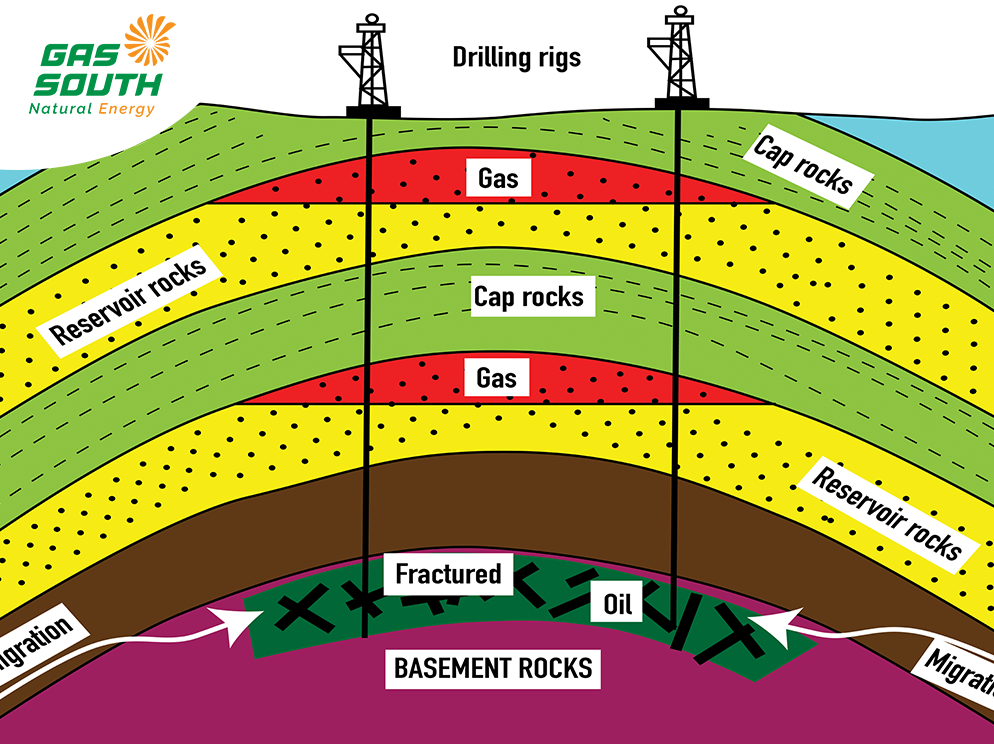Natural gas is considered a cleaner fossil fuel due to its lower carbon emissions during consumption. Nowadays, natural gas is utilized for various purposes, including industrial consumption, as an alternative fuel in transportation, and as a substitute for dry gas in power generation. Let's explore further about natural gas and its positive impacts on the environment in the future.
1. About Natural gas
Natural gas, with the main component being methane, makes up around 85%-95% of its composition, along with a mixture of gasses such as ethane, propane, and butane. Natural gas is a fossil fuel extracted from reservoirs beneath the Earth's surface. After extraction, natural gas is transported to gas processing plants to remove impurities and by-products. It is then transported through pipelines to the point of consumption or delivered to processing plants, stored in gas cylinders, and supplied to consumers. Currently, there are two common forms of natural gas used in the market: compressed natural gas (CNG) and liquefied natural gas (LNG).

2. Positive and negative impacts of natural gas on the environment
Natural gas is a type of fossil fuel that is highly regarded for its environmental friendliness and safety for human health. Below, we will explore how natural gas specifically affects the environment and human life.
2.1. Positive impacts:
-
Natural gas is not only safer but also cleaner than conventional fuels, emitting only about 45-50% of the CO2 emissions of coal. The combustion process leaves no fuel residue, reducing maintenance costs and environmental incident expenses.
-
Using natural gas for electricity generation results in approximately 45% lower carbon emissions compared to coal, while ensuring a stable energy supply and minimizing disruptions caused by weather conditions, unlike wind or solar power.
-
Natural gas, especially in the form of CNG, serves as a replacement for gasoline and diesel in transportation, contributing to reduced emissions and substantial fuel cost savings compared to conventional fuels.
-
After processing, compressed natural gas (CNG) occupies only about 1/200 of the volume, while liquefied natural gas (LNG) takes up only about 1/600 of the volume of natural gas at STP, making it advantageous for large-scale storage and transportation with lower risks of explosion due to gas leaks during transport.

2.2. Negative impacts:
-
Carbon dioxide emissions: Despite being a cleaner fuel compared to conventional sources, natural gas still emits carbon dioxide during its usage, contributing to negative environmental and atmospheric effects.
-
Natural gas leakage: The processes of extraction, storage, transportation, and distribution of natural gas leaks into the atmosphere, causing ozone layer depletion and contributing to global warming.
-
Resource depletion: Similar to other fossil fuels, natural gas is a non-renewable resource and can be depleted over time. Without proper planning and sustainable practices, there is a risk of depletion of the resource.
-
Explosion hazards: Explosions related to natural gas leaks can lead to serious damages if not detected and handled promptly.
Natural gas is the perfect choice to replace other fossil fuels in the modern era, aiming to minimize the negative impacts on the living environment and toward a healthier future. However, the extraction and utilization of natural gas require sustainable planning to preserve the fuel source while meeting society's needs and preserving the human living environment.





